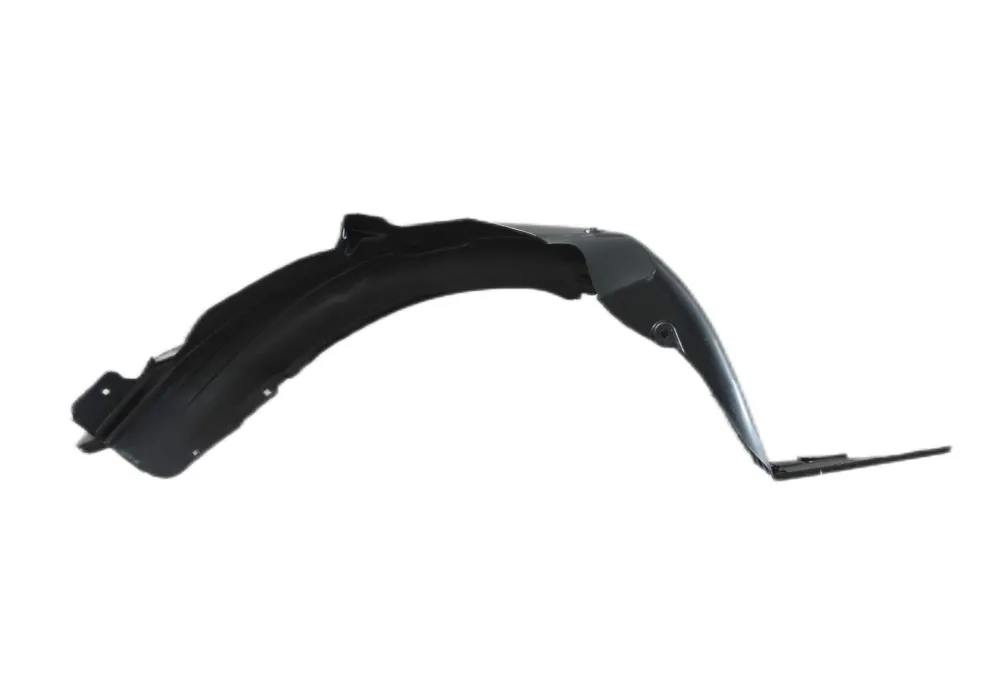Understanding the Importance of Car Fender Replacement
Car fenders are essential components that protect your vehicle from road debris, dirt, and weather elements. Over time, fenders can sustain damage due to accidents, corrosion, or wear and tear, leading to compromised protection and aesthetics. Knowing when and why car fenders need replacement is vital for maintaining the safety, functionality, and appearance of your vehicle. This guide provides an in-depth look at the factors that determine the necessity of car fender replacement, the signs to watch for, and the benefits of timely intervention.
Reasons Behind Car Fender Replacement
Damage from Collisions and Accidents
One of the most common reasons for car fender replacement is damage sustained in collisions or minor accidents. Even a seemingly small dent or scratch can weaken the structural integrity of the fender. More severe impacts may cause cracks, bends, or holes that cannot be effectively repaired. Replacing damaged car fenders restores the original protection against road hazards and ensures the vehicle maintains its designed safety standards.
Effects of Corrosion and Wear
Car fenders are constantly exposed to moisture, salt, and other corrosive agents, especially in regions with harsh winters or coastal climates. Over time, this exposure can lead to rust and corrosion, which deteriorate the metal and reduce its protective capabilities. When corrosion spreads extensively, repairing the fender becomes impractical, making replacement the best option. Maintaining corrosion-free fenders helps prevent further damage to adjacent parts of the vehicle.
Identifying When Replacement Is Necessary
Visual Signs of Damage
Regular inspections of your vehicle’s car fenders can reveal when replacement is needed. Look for visible dents, cracks, rust spots, or holes. These signs indicate the fender’s inability to offer proper protection. Additionally, paint peeling or bubbling can be a symptom of underlying corrosion. Ignoring these signs can lead to costly repairs and affect the vehicle’s overall value.
Functional Issues Affecting Safety
Beyond aesthetics, damaged car fenders can impact vehicle safety. For example, a bent fender might interfere with the wheel or suspension components, affecting handling and tire wear. Loose or broken fenders can create hazards by allowing debris to enter critical areas or by detaching while driving. If any functional issues arise, replacement becomes crucial to maintain safe driving conditions.
Choosing the Right Car Fender for Replacement
Material Considerations
Selecting the appropriate material for replacement car fenders influences durability and performance. Steel fenders offer excellent strength and impact resistance but are prone to rust. Aluminum fenders provide a lighter alternative with good corrosion resistance. Plastic and composite fenders are favored for their flexibility, rust-proof qualities, and ease of installation. Evaluating the vehicle’s use and environmental conditions will guide material choice.
OEM vs. Aftermarket Options
Replacement car fenders come in OEM (original equipment manufacturer) and aftermarket varieties. OEM fenders match the original parts in fit, finish, and quality, ensuring seamless integration with the vehicle’s body. Aftermarket fenders can vary widely in quality and price but offer a broader range of styles and materials. Choosing between OEM and aftermarket depends on budget, desired quality, and whether customization is a factor.

The Replacement Process Explained
Professional Assessment and Removal
Before replacing a car fender, a professional inspection determines the extent of damage and identifies any related issues. Proper removal involves detaching the damaged fender without harming adjoining parts like headlights, bumpers, or the hood. Skilled technicians ensure the process is efficient and minimizes additional repairs.
Installation and Finishing Touches
Installing a new car fender requires precise alignment to maintain vehicle aesthetics and aerodynamics. The fender must be securely attached using appropriate fasteners and seals to prevent water ingress. After installation, finishing steps like sanding, priming, and painting ensure the fender matches the vehicle’s color and texture. These steps are critical to restoring the vehicle’s appearance and value.
Benefits of Timely Fender Replacement
Enhancing Vehicle Safety
Replacing damaged car fenders promptly contributes to overall vehicle safety. Properly functioning fenders protect against road debris and reduce the risk of damage to wheels and suspension. They also help maintain the vehicle’s structural integrity in the event of further collisions.
Maintaining Vehicle Value and Appearance
A vehicle with intact and well-maintained car fenders retains higher resale value. Damaged or corroded fenders detract from the car’s look and may signal neglect to potential buyers. Timely replacement ensures the vehicle looks its best and reflects proper care.
Maintaining Car Fenders to Prolong Lifespan
Routine Cleaning and Inspection
Regular cleaning of car fenders removes dirt, salt, and grime that can accelerate corrosion. Inspections help catch early signs of damage or rust before they worsen. Simple maintenance practices extend the lifespan of fenders and reduce the frequency of replacements.
Protective Coatings and Treatments
Applying protective coatings like paint sealants or anti-rust sprays can guard car fenders against environmental damage. Some treatments are designed specifically for metal surfaces to inhibit rust formation. Investing in these preventative measures saves time and money in the long run.
Future Innovations in Fender Materials and Design
Advances in Composite Materials
Emerging composite materials offer improved strength, reduced weight, and enhanced resistance to corrosion. These innovations will make future car fenders more durable and environmentally friendly, providing better protection with less impact on vehicle weight.
Smart Fenders with Integrated Technology
The integration of sensors and cameras into car fenders is becoming more common. Smart fenders can monitor damage, alert drivers to hazards, and assist with parking or collision avoidance. These technologies represent the next generation of vehicle safety features tied directly to fender design.
Frequently Asked Questions
How can I tell if my car fender needs replacement?
If your car fender has visible damage such as dents, cracks, holes, or rust that affects its integrity, replacement is recommended. Functional issues like interference with wheels or loose mounting are also signs.
What materials are best for car fender replacement?
Steel and aluminum are traditional materials offering strength and durability. Plastic and composite fenders resist rust and are lighter. The best choice depends on your vehicle’s use and environment.
Is it better to choose OEM or aftermarket fenders for replacement?
OEM fenders guarantee perfect fit and finish matching your vehicle. Aftermarket fenders provide more options and may be less expensive but vary in quality. Consider your priorities and budget.
How often should I inspect my car fenders for damage?
It is advisable to inspect your car fenders regularly, at least every few months, and after any minor accidents or impacts to ensure early detection of damage or corrosion.
Table of Contents
- Understanding the Importance of Car Fender Replacement
- Reasons Behind Car Fender Replacement
- Identifying When Replacement Is Necessary
- Choosing the Right Car Fender for Replacement
- The Replacement Process Explained
- Benefits of Timely Fender Replacement
- Maintaining Car Fenders to Prolong Lifespan
- Future Innovations in Fender Materials and Design
- Frequently Asked Questions


